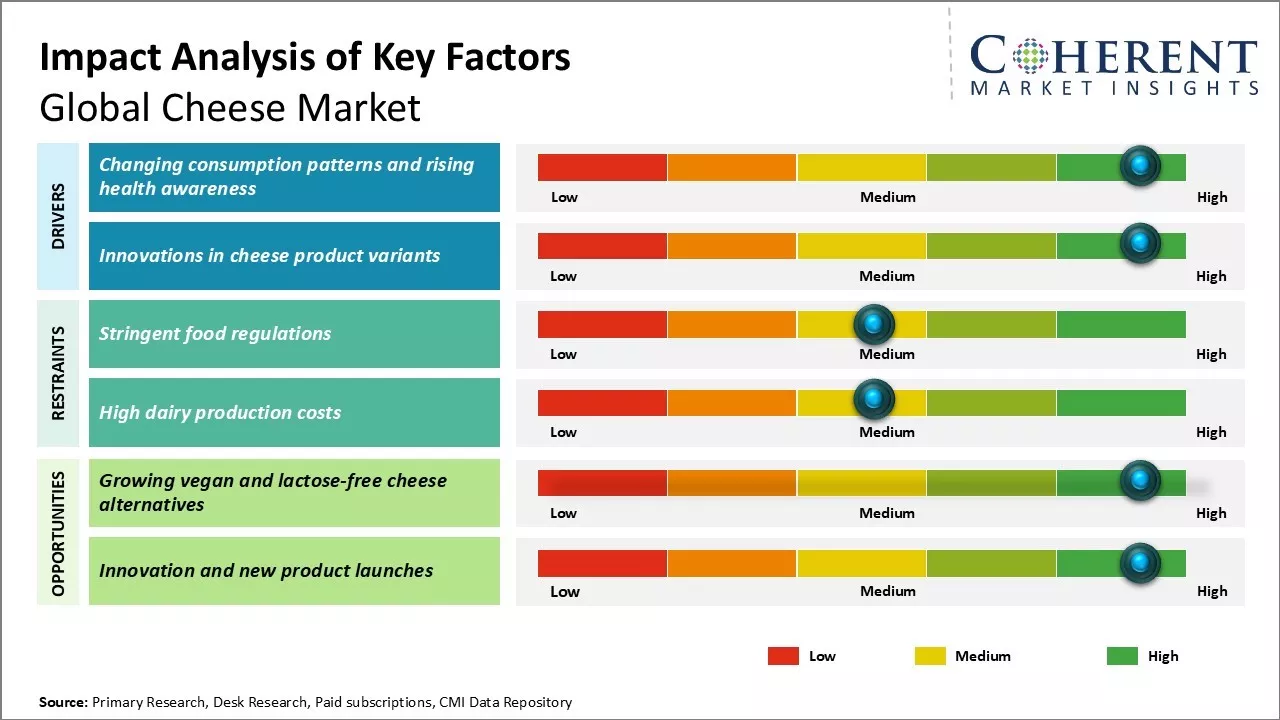The global cheese market is estimated to be valued at USD 110.11 Bn in 2025 and is expected to reach USD 162.42 Bn by 2032, exhibiting a compound annual growth rate (CAGR) of 5.7% from 2025 to 2032.

To learn more about this report, Request sample copy
The consistent rise in demand for packaged and processed dairy products across both developed and emerging economies is driving the growth of the global cheese market. Changing dietary patterns and increasing preference for western food is further fueling the sales of cheese-related products globally.
Changing consumption patterns and rising health awareness
With increasing health consciousness among consumers globally, their eating habits and food choices have been evolving significantly over the past decade. While cheese was historically seen as an indulgence, consumers are now viewing it in a new light - as a nutritious and convenient snack or ingredient that can add protein and calcium to meals and diets. As busy lifestyles take over and people increasingly dine out or order in, snacking has become integral part of daily lives. This has opened up opportunities for cheese as nutritious snacking options are in demand.
Another key factor is the growth of the working population and dual income households especially in developing nations. With both adults engaged in jobs, they have lesser time to cook elaborate meals at home which is driving the demand for easy to make and fast-food options. Processed and packaged cheese slices, shreds and snacks are finding more acceptance due to their ease of preparation whether home or outdoor consumption. As a result, traditional cheese varieties are losing ground while nutritional cheese variants designed for snacking occasions are witnessing higher growth rates.
Changing societies and evolving family structures are also impacting cheese preferences. For example, in regions where multi-generational families previously lived together, greater number of nuclear families now demand food items that cater to their smaller household size and changing tastes. Lightly-flavored mild cheese cuts and snack packs fulfill these newer requirements of portability and individual portion control. At the same time, consumers have grown more aware of specific health factors like calories, fats, and allergens due to the spread of medical information online and via social media. This has accelerated interest in low-fat, low-sodium, probiotic, and lactose-free cheese varieties in recent times.
Joining thousands of companies around the world committed to making the Excellent Business Solutions.
View All Our Clients